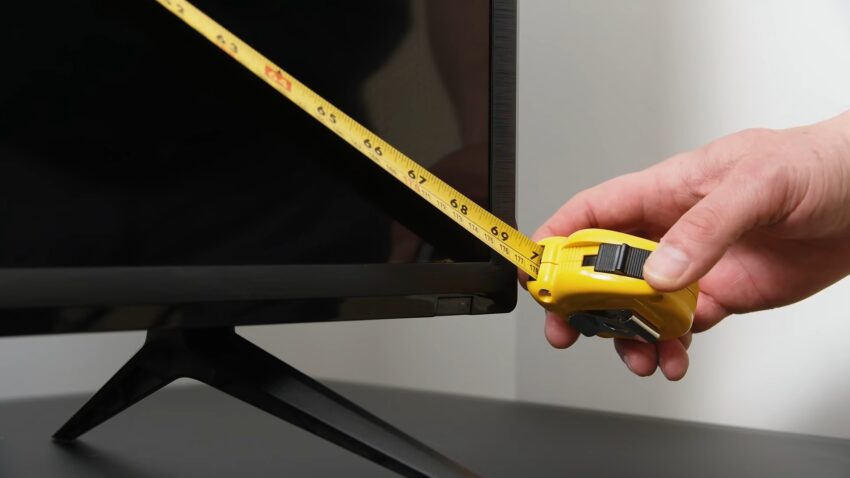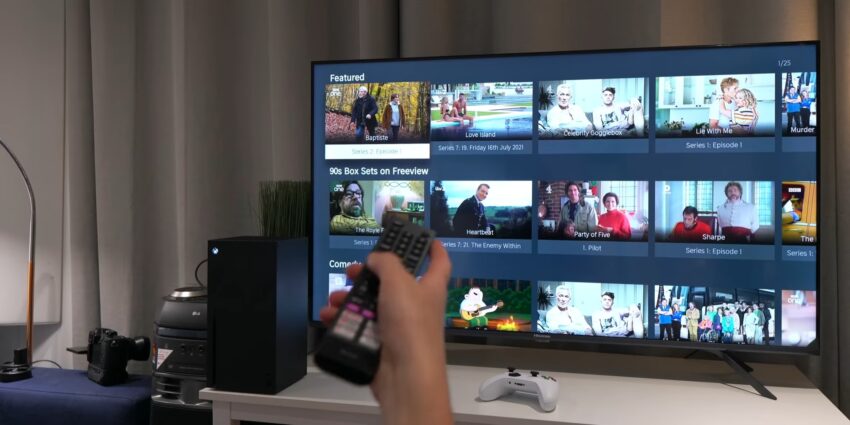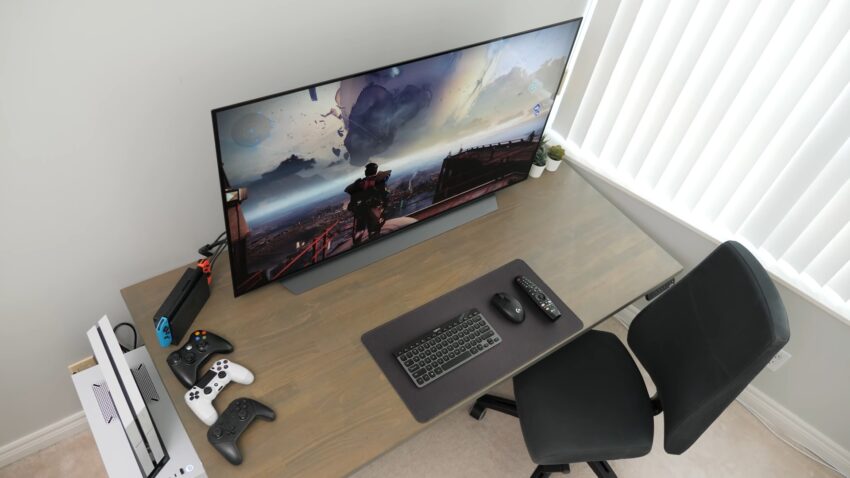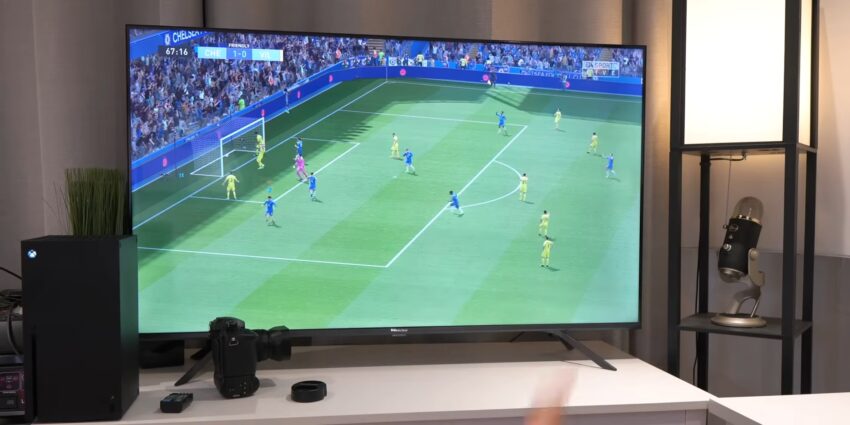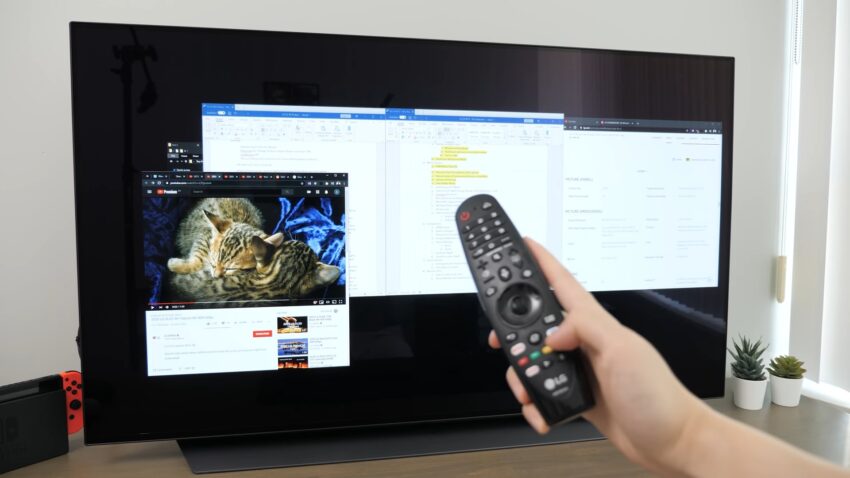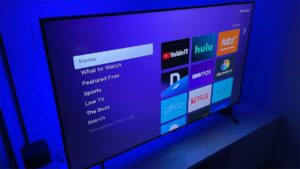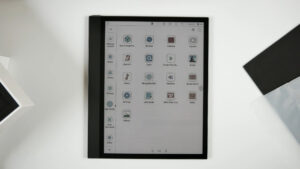Over the last decade, I’ve worked on and repaired a vast array of television sets, granting me a depth of insight into the nuances of display technology. I’ve observed the subtle yet significant differences that even a slight variance in screen size can impart.
Today, I wish to discuss something that has piqued the interest of many: the comparison between a 50-inch 16×9 display and its slightly smaller counterpart, the 48-inch 16×9 display.
Drawing from my extensive hands-on experience, I will endeavor to shed light on the distinctions, benefits, and potential drawbacks of each, aiming to equip you with a comprehensive understanding to inform your decisions.
Fun Fact: Did you know that the optimal viewing distance for a television is about 1.6 times its diagonal length? So, for a 50” TV, the best distance is approximately 6.8 feet!
Interested in 50 Inch 16×9 comparison with 42 inch display? We have a perfect article for you.
Display Dimensions
The 16×9 aspect ratio has become the standard for most modern televisions and monitors. This ratio refers to the width and height of the screen, meaning the screen is 16 units wide for every 9 units high. This widescreen format provides a more cinematic and immersive experience, especially when watching movies or playing games.
Display Size
When we talk about a 50″ or 48″ display, we’re referring to the diagonal measurement from one corner of the screen to the opposite corner. It’s a common misconception that this measurement refers to the width of the screen.
In reality, a 50″ 16×9 display will be wider and taller than a 48″, even though the difference might seem slight. The choice between these sizes often boils down to personal preference, room size, and viewing distance.
Pro Tip: Always measure the space where you plan to place your display before making a purchase. This ensures that the screen fits comfortably and provides the best viewing experience.
The Case for a 50″
A 50″ display offers a slightly larger screen real estate than its 48″ counterpart. This can lead to a more immersive viewing experience, especially when watching movies or playing video games. The larger screen can make details more noticeable and can enhance the overall visual experience.
With a larger screen, you can appreciate finer details in high-resolution content. Whether it’s the intricate patterns in a nature documentary or the detailed graphics in a video game, a 50″ display can make these elements pop.
Additionally, for those who often have friends or family over for movie nights or gaming sessions, a larger screen can provide a better view for everyone, even those sitting off to the side.
Interesting Fact: The human visual system has a total horizontal field of view of about 200 degrees. A larger TV can fill more of this field, providing a more cinematic experience.
Advantages of a 48″
Striking a balance between size and versatility. While it’s slightly smaller than the 50″ variant, it’s still large enough to offer a captivating viewing experience. Its compact nature makes it a more flexible choice for various room sizes, especially if you’re working with limited space.
Ideal for Smaller Spaces
For those living in apartments or homes with smaller living areas, a 48″ display can be the perfect fit. It provides a big-screen experience without overwhelming the room. Plus, it’s easier to position in tighter spaces, ensuring that you get the best angle for viewing.
Did You Know?: Smaller displays can often lead to sharper images, especially if the resolution remains the same. This is because the pixels are packed more densely, enhancing the overall clarity.
Comparing Visual Quality
While both the 50″ and 48″ displays can offer stunning visuals, the slightly smaller size of the 48-inch might lead to a perceived increase in sharpness, especially if both screens have the same resolution. The difference is often subtle and might not be noticeable unless you’re looking for it.
Resolution and Clarity
Resolution refers to the number of pixels that make up a display. The more pixels, the clearer and more detailed the image will appear. For instance, a 4K resolution means the display has approximately 4,000 pixels horizontally.
When choosing between a 50″ and a 48″ display, it’s essential to consider the resolution. A higher resolution on a larger screen can offer a more detailed and immersive viewing experience.
PPI (Pixels Per Inch) Considerations
PPI stands for Pixels Per Inch and is a measure of how densely pixels are packed into a screen. A higher PPI can lead to sharper images as there are more pixels in a given area. When comparing two displays of different sizes but with the same resolution, the smaller display will generally have a higher PPI, leading to potentially sharper images.
Pro Tip: Always check the PPI when comparing displays. It can give you a better idea of the potential image clarity, especially when sizes are close, like the 50″ and 48″.
Use Cases and Preferences
Home Theater Enthusiasts’ Perspective
For those who love the cinematic experience at home, every inch can make a difference. A 50″ display might offer that extra immersion, making you feel like you’re in the middle of the action. A 48″ can still provide a fantastic home theater experience, especially in smaller rooms.
Gaming Experience on Different Sizes
Gamers often look for displays that offer quick response times and vibrant colors. While both the 50″ and 48″ can serve gamers well, the choice might come down to the upgraded gaming setup.
A larger screen can be more immersive for single-player games, while a slightly smaller screen might be preferred for competitive gaming where quick reactions are essential.
Productivity and Multitasking Considerations
For those using their displays for work or multitasking, size can play a role in productivity. A larger screen can allow for more windows to be open simultaneously, aiding in multitasking. Resolution plays a crucial role here. A higher resolution on a 48″ might be more beneficial than a lower resolution on a 50″.
FAQs
What is the difference between OLED and LED when considering a 48″ or 50″?
OLED (Organic Light Emitting Diodes) displays have individual pixels that emit their own light, allowing for perfect blacks and a higher contrast ratio. LED (Light Emitting Diodes) displays use a backlight to illuminate the pixels. While OLEDs can offer better picture quality, they tend to be pricier. LEDs, on the other hand, are more common and can be more affordable.
How does the refresh rate impact the viewing experience on these displays?
The refresh rate, measured in Hertz (Hz), indicates how many times the screen refreshes its image per second. A higher refresh rate, like 120Hz, can offer smoother motion, especially beneficial for fast-paced action movies or gaming. Both 48″ and 50″ displays can come with varying refresh rates.
Are there any energy consumption differences between a 48″ and a 50″ display?
Generally, larger screens can consume more power, but the actual energy consumption also depends on the display technology, brightness settings, and usage patterns. It’s always a good idea to check the energy rating when comparing displays.
How do curved screens compare to flat ones in these sizes?
Curved screens are designed to offer a more immersive viewing experience by wrapping the image slightly around the viewer. The effectiveness of this design can be subjective and might be more noticeable on larger screens than on 48″ or 50″ displays.
Can I wall-mount both 48″ and 50″ displays?
Yes, most modern displays, regardless of size, come with VESA mount compatibility, allowing them to be wall-mounted. Always check the specific model’s specifications and ensure you have the appropriate mounting hardware.
Are there any specific brands that excel in the 48″ or 50″ category?
Several reputable brands produce high-quality displays in these sizes, including Samsung, LG, Sony, and Panasonic, among others. The best brand often comes down to personal preference, specific features desired, and budget.
Final Words
When comparing a 50-inch 16×9 display to a 48-inch 16×9 display, the differences may initially seem minimal, given the mere 2-inch disparity. In my experience, even these seemingly subtle variations can translate to noticeable differences in viewing experiences, especially when one factors in room size, viewer distance, and content resolution.
While both displays adhere to the 16×9 aspect ratio, ensuring consistency in image proportions, the 50-inch screen offers a marginally larger canvas, which can accentuate details, especially in high-resolution content. That said, the 48-inch model might be more suitable for tighter spaces, ensuring the display isn’t overwhelming.
It’s paramount to consider not just the display’s size but how it harmonizes with the environment it is placed in.


